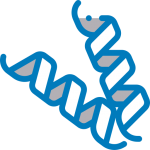
 ITCH [GST-tagged]
ITCH [GST-tagged]
63-0006-025
25 µg
Brand
Ubiquigent
Description
The enzymes of the ubiquitylation pathway play a pivotal role in a number of cellular processes including the regulated and targeted proteasome-dependent degradation of substrate proteins. Three classes of enzymes are involved in the process of ubiquitylation; activating enzymes (E1s), conjugating enzymes (E2s) and protein ligases (E3s). Itchy E3 ubiquitin protein ligase (ITCH) is a member of the E3 protein ligase family and cloning of the human gene was first described by Wood et al. (1998). ITCH belongs to the HECT family of E3 ubiquitin-ligases that regulate key trafficking decisions, including targeting of proteins to the proteasome or lysosomes. ITCH protein contains an N-terminal C2 domain, four tandem WW domains and a HECT (homologous to the E6 associated protein carboxyl terminus) domain. ITCH has been shown to mediate the ubiquitylation of EGF and CXCR4 receptors, targeting them for degradation (Azakir and Angers 2009; Marchese et al., 2003). JNK phosphorylates ITCH activating its E3 ligase activity, which in turn controls the turnover of Jun proteins and T cell differentiation. The activity of ITCH ubiquitin ligase is negatively regulated by Fyn catalysed tyrosine phosphorylation of ITCH Tyr371 (Yang et al. 2006).
Application
Reactivity



